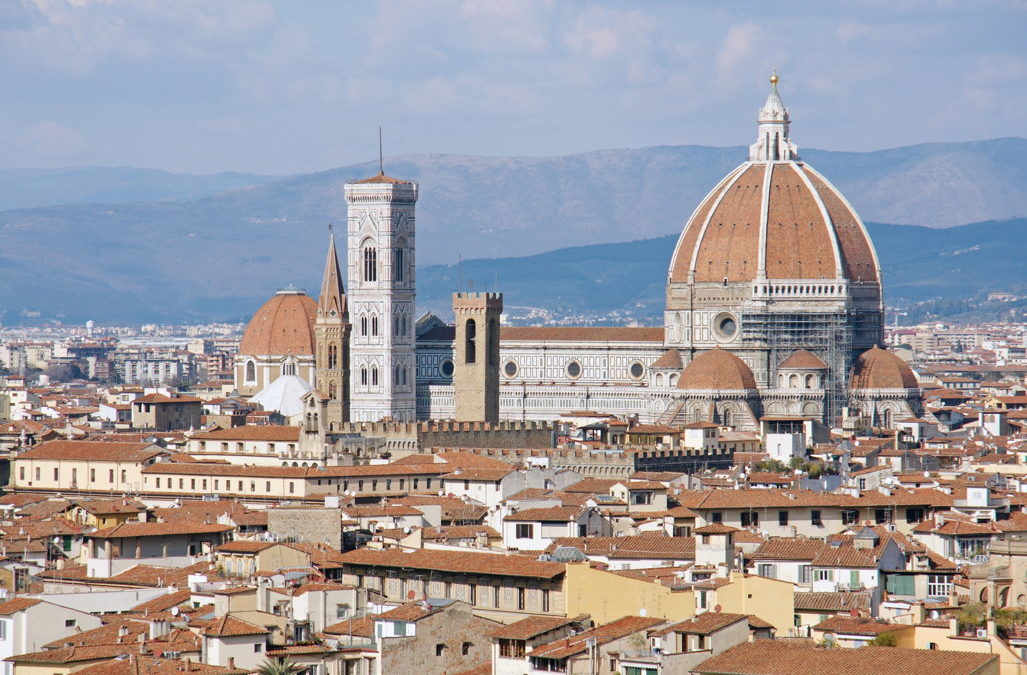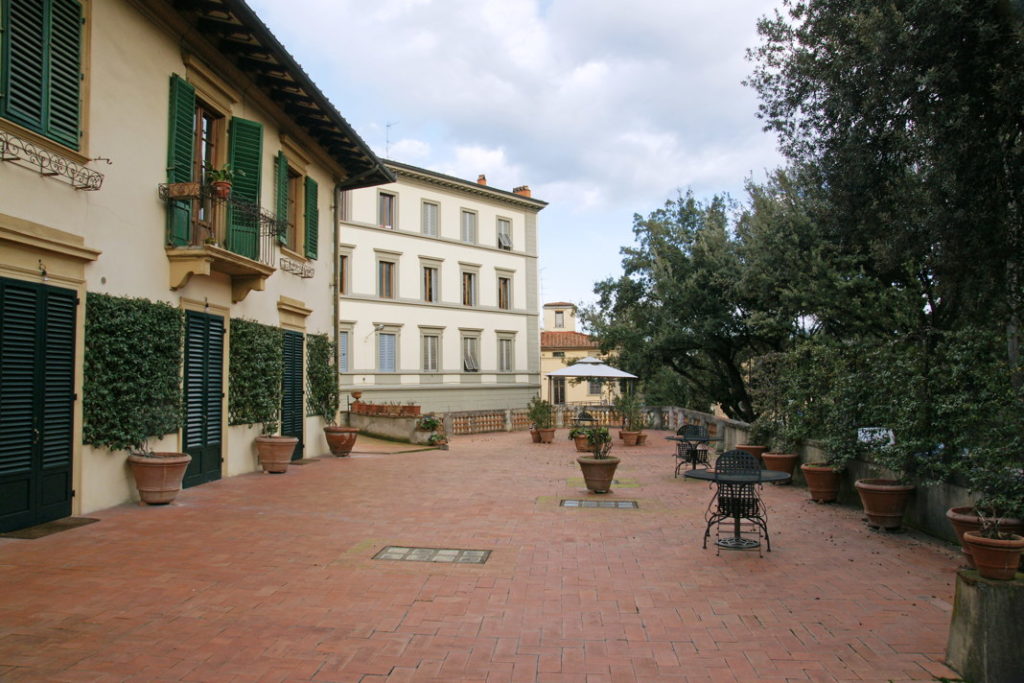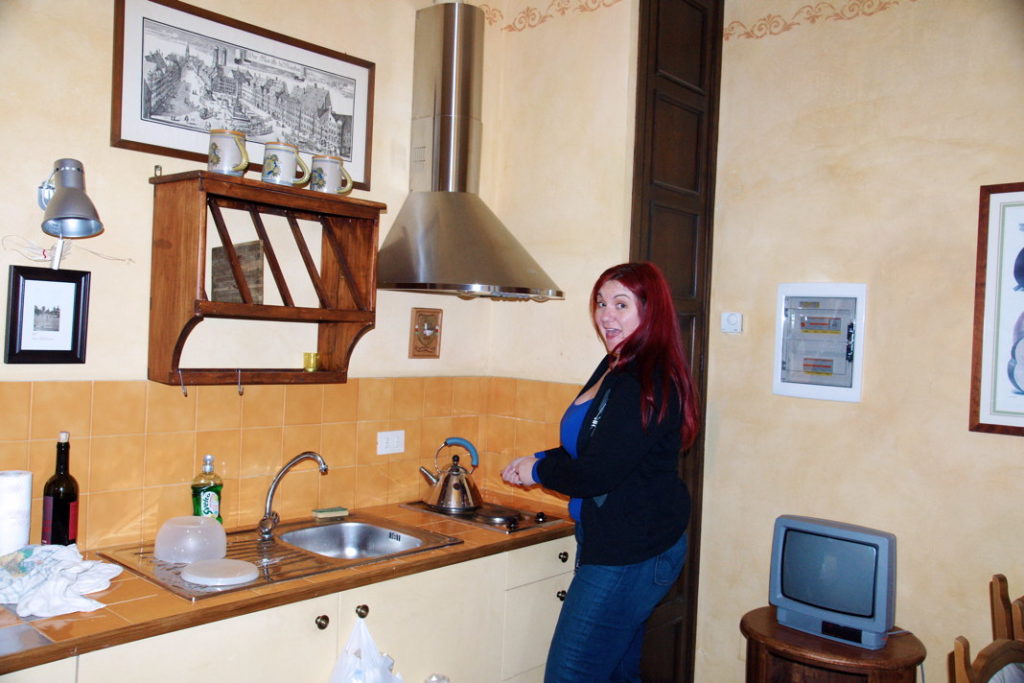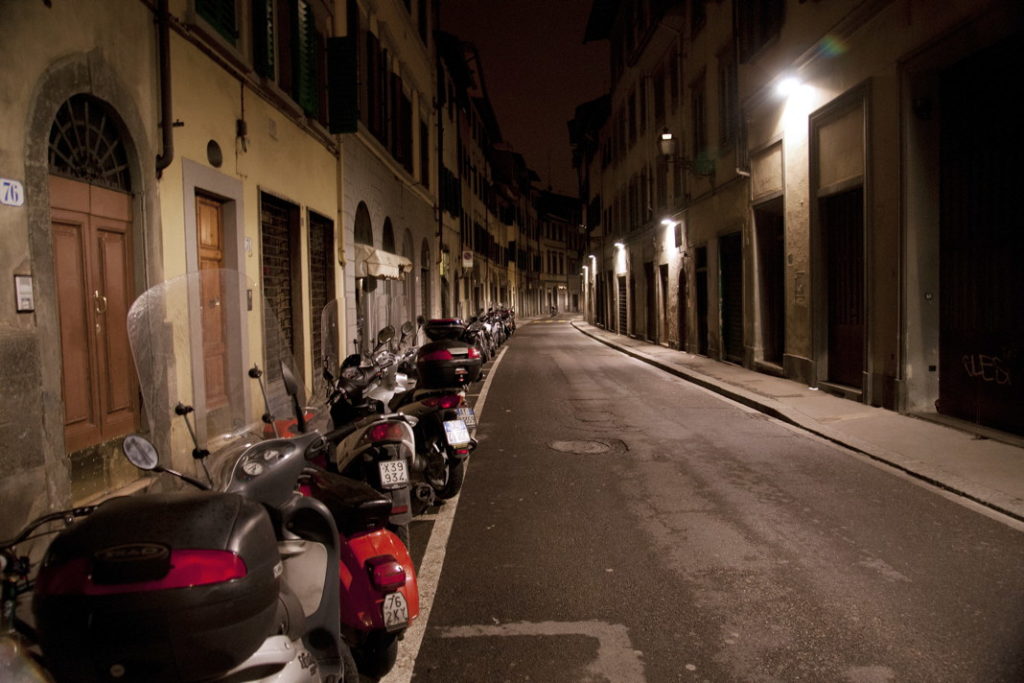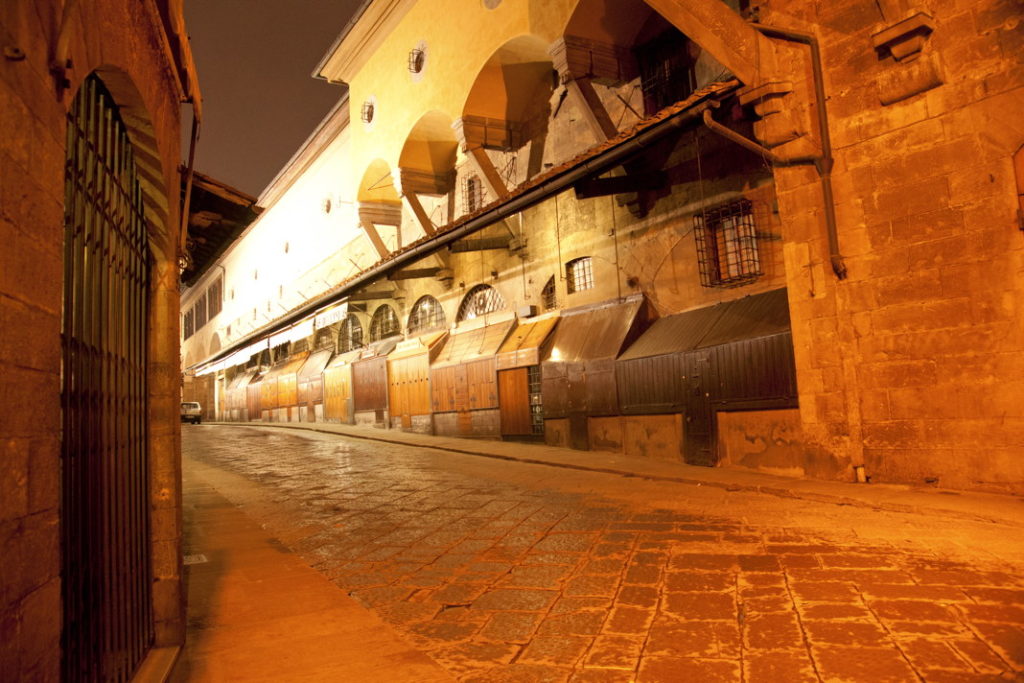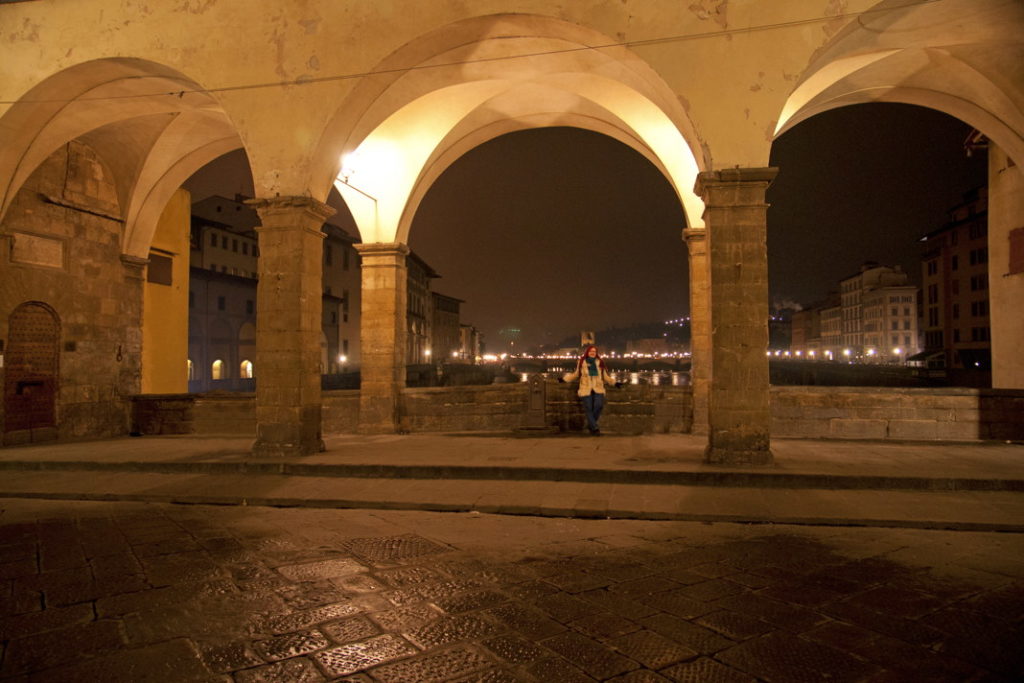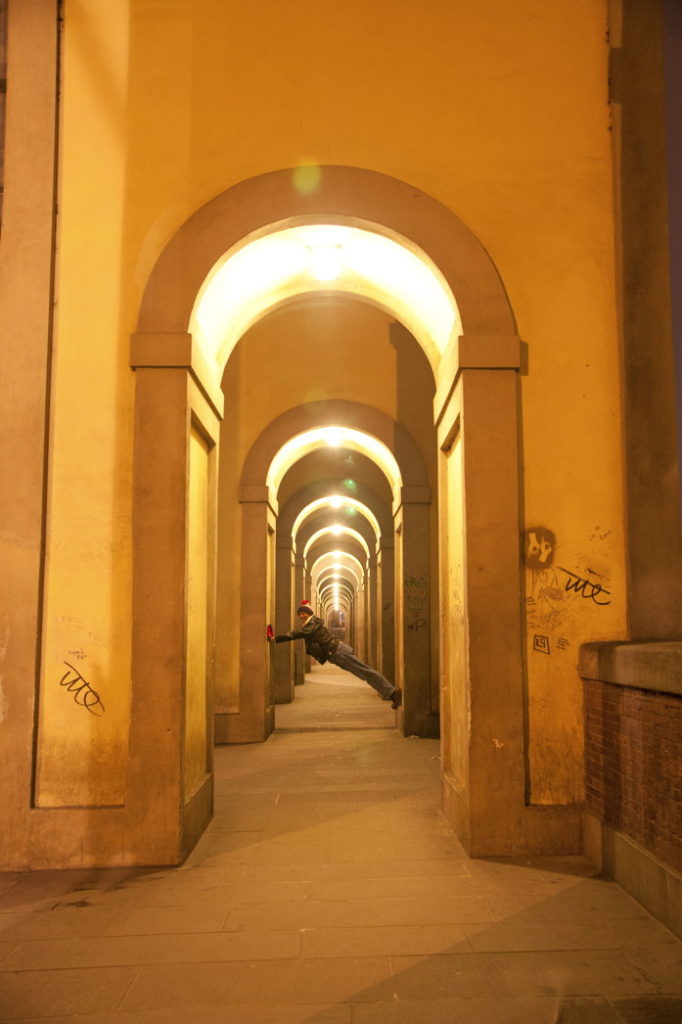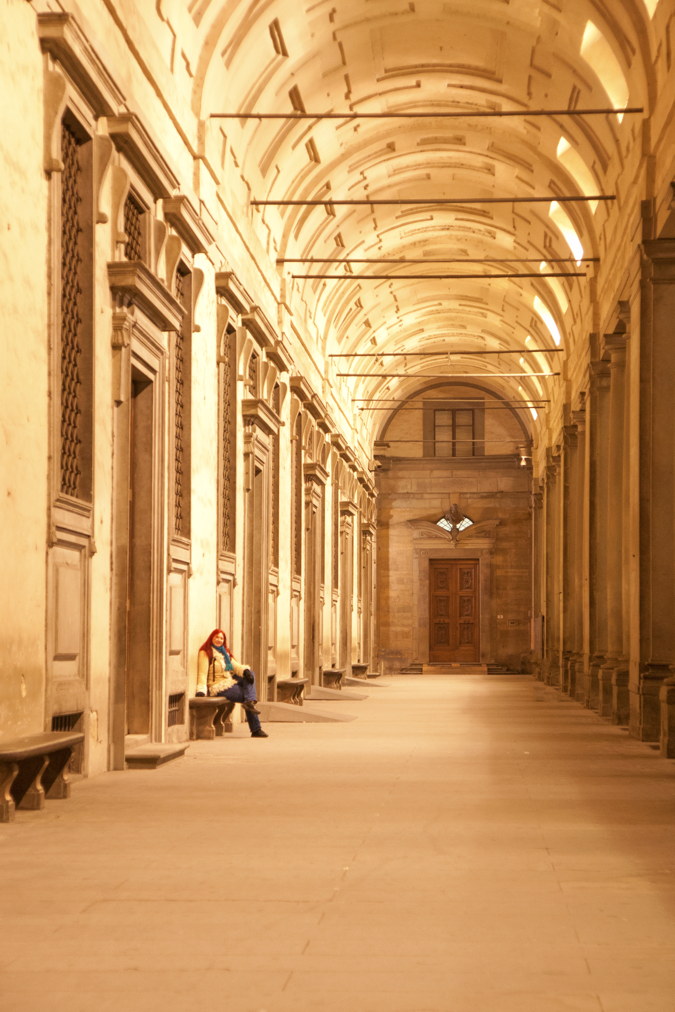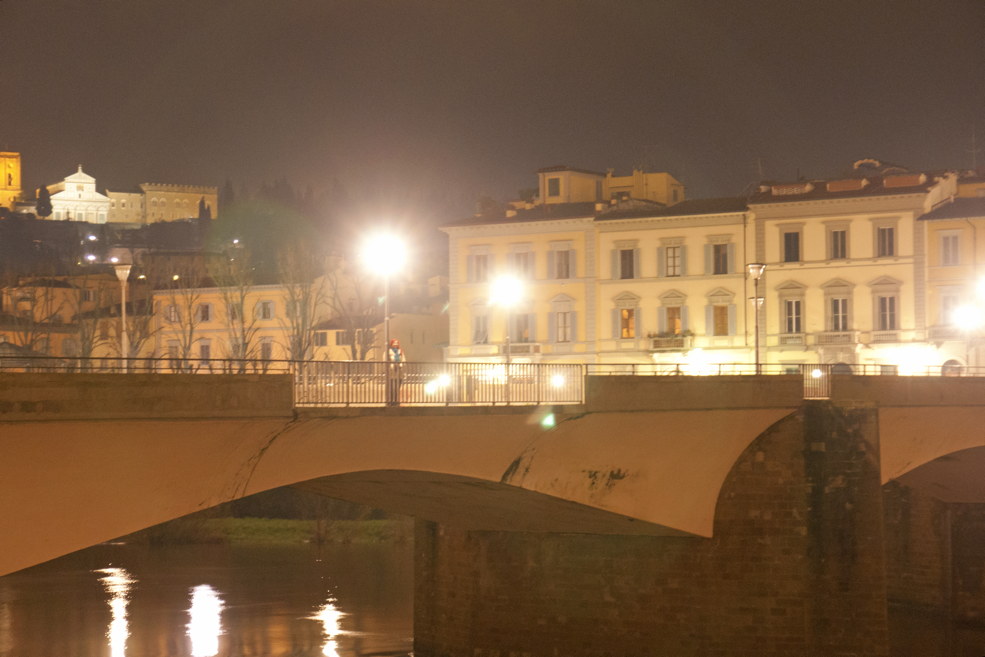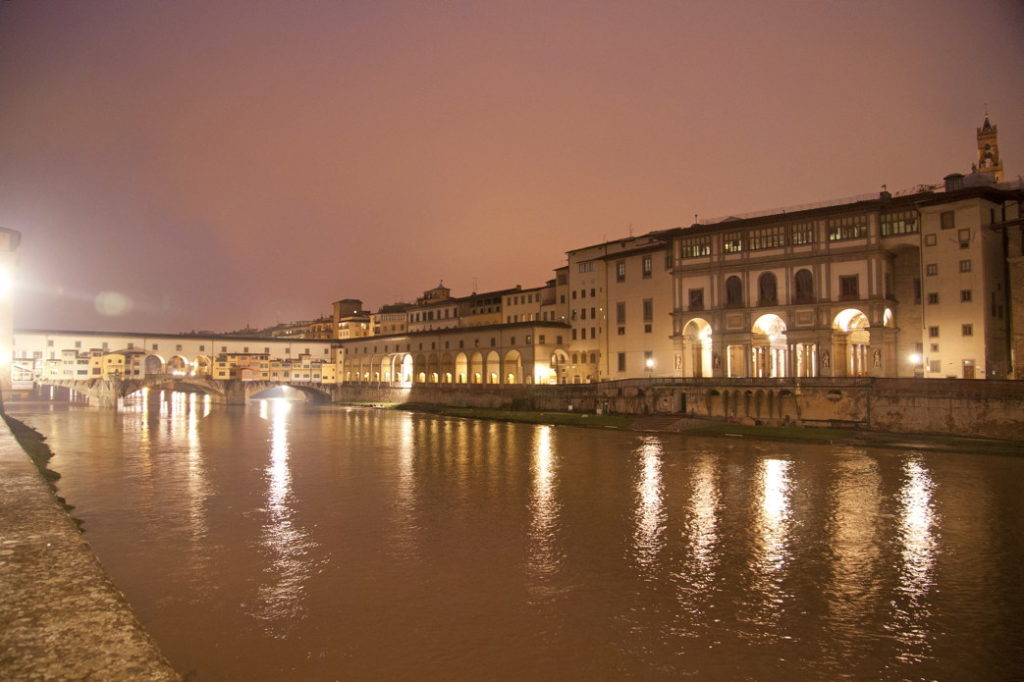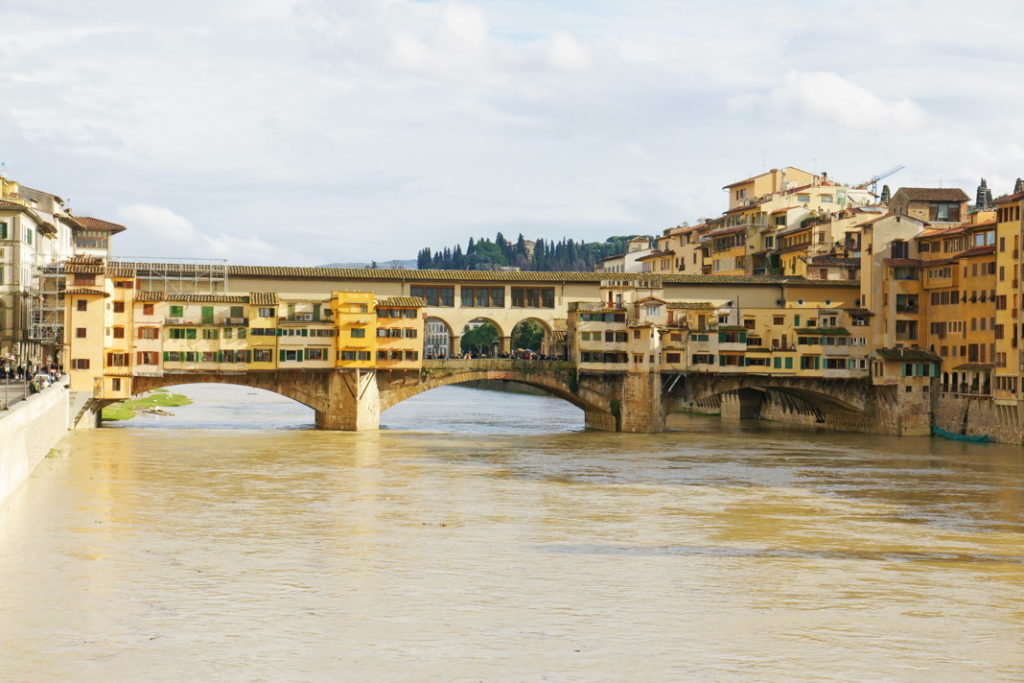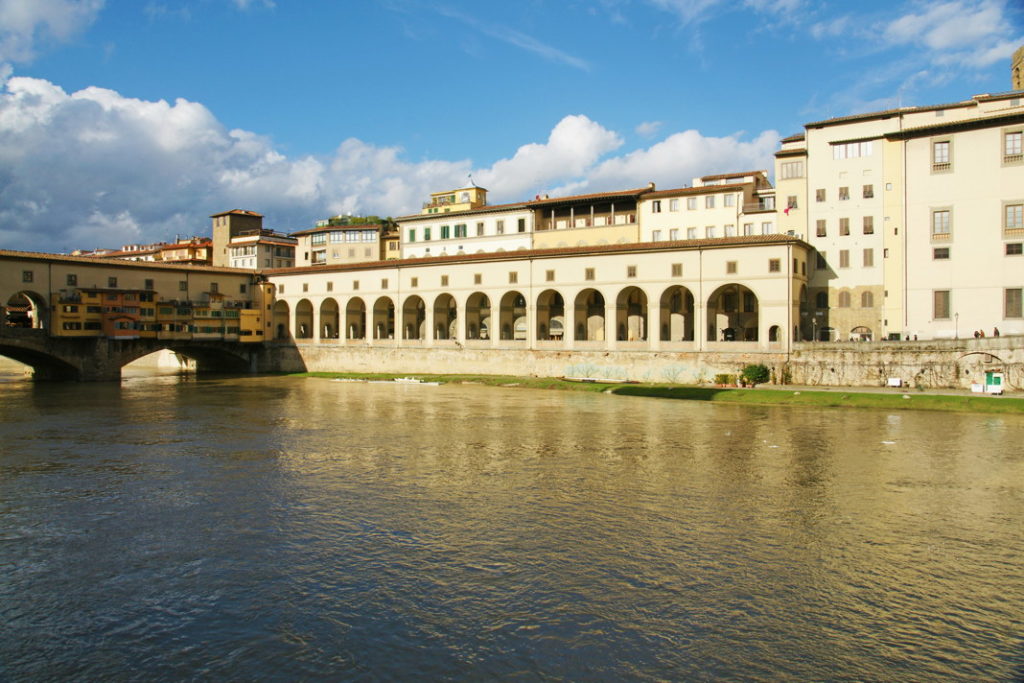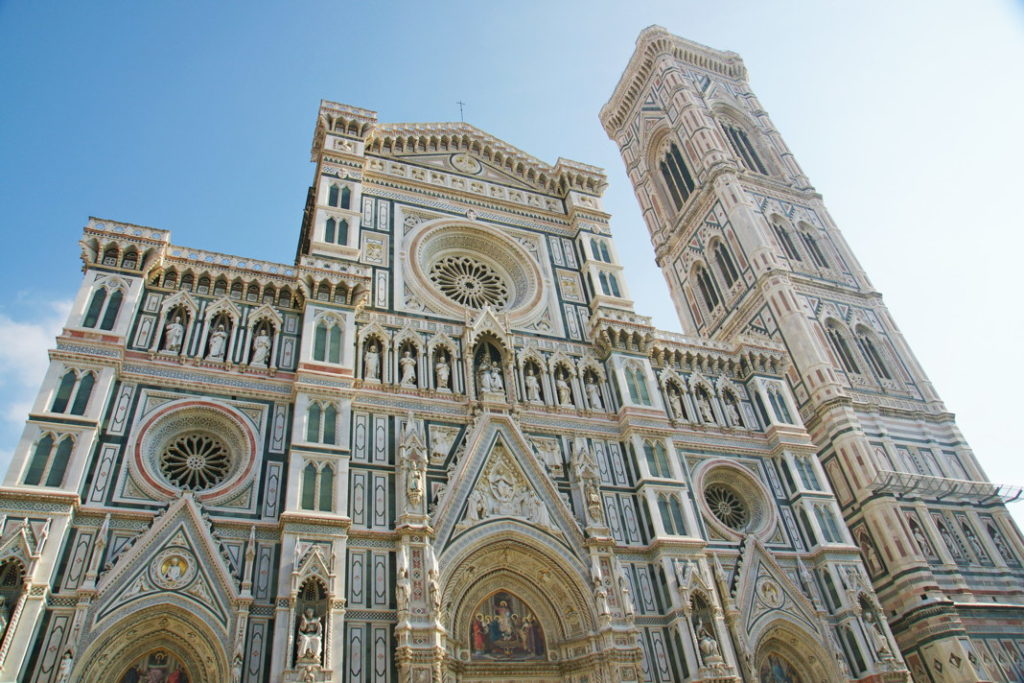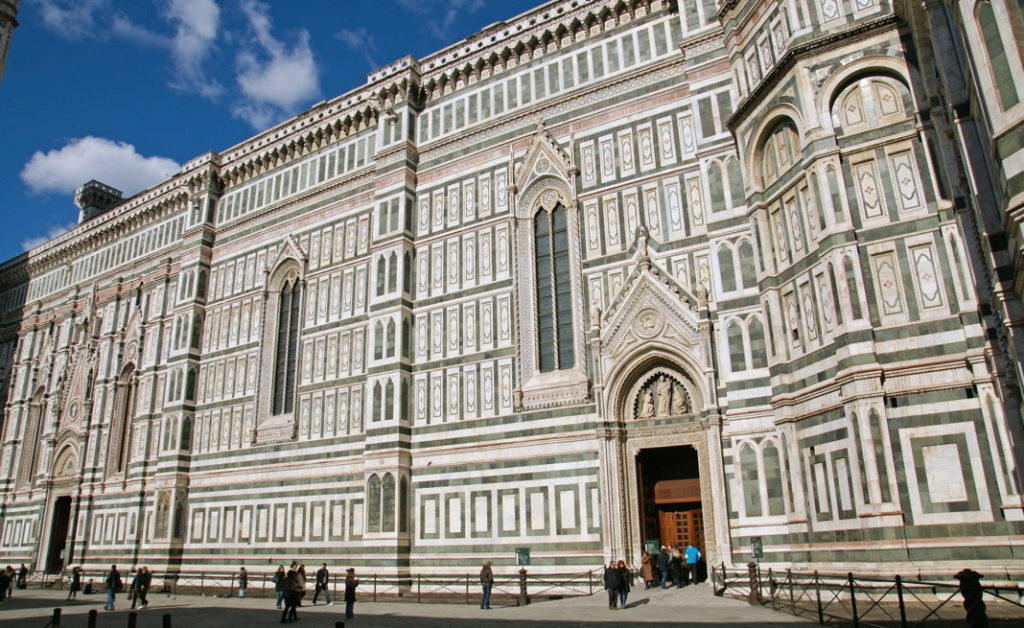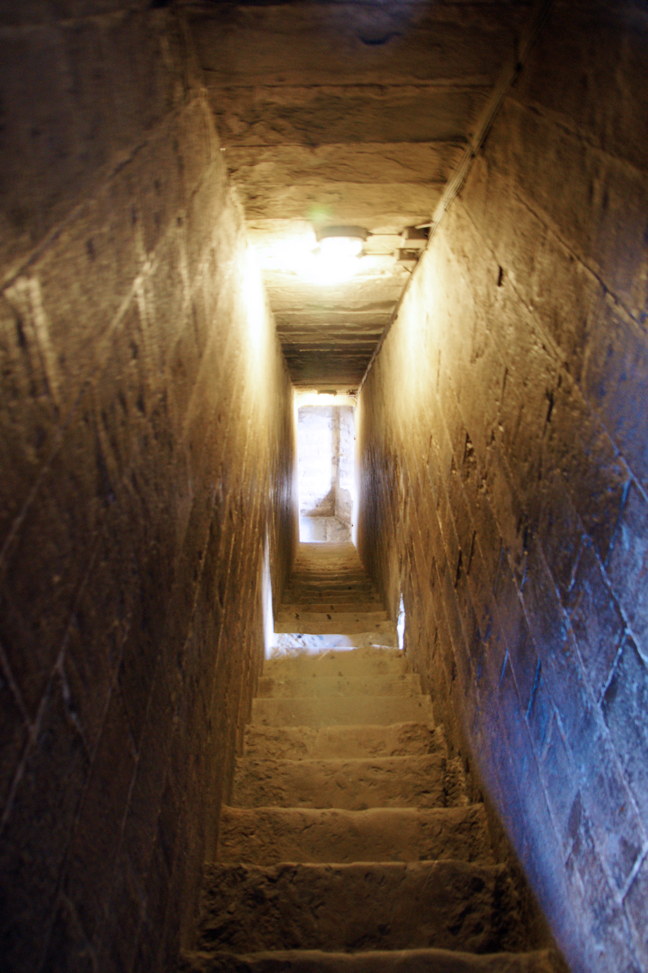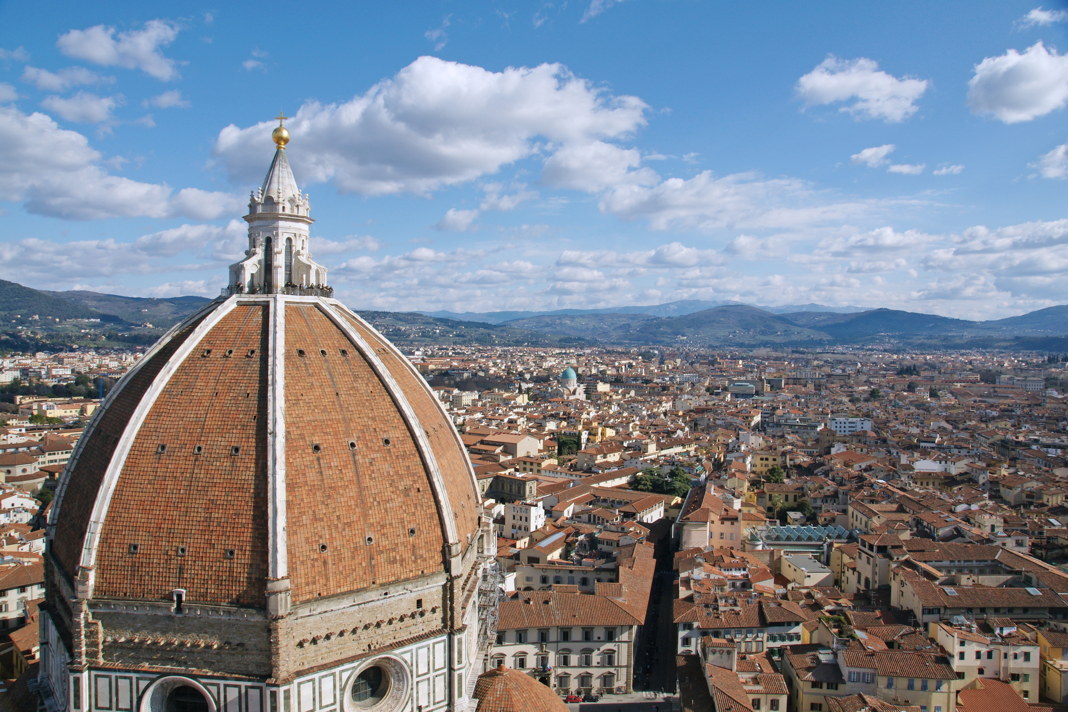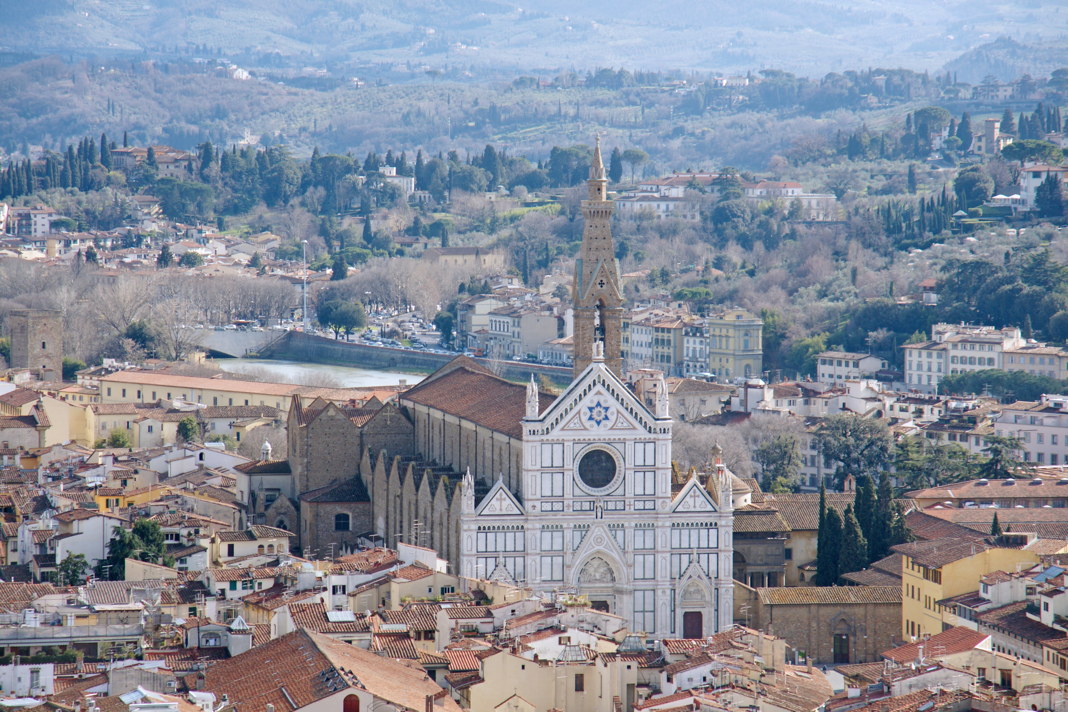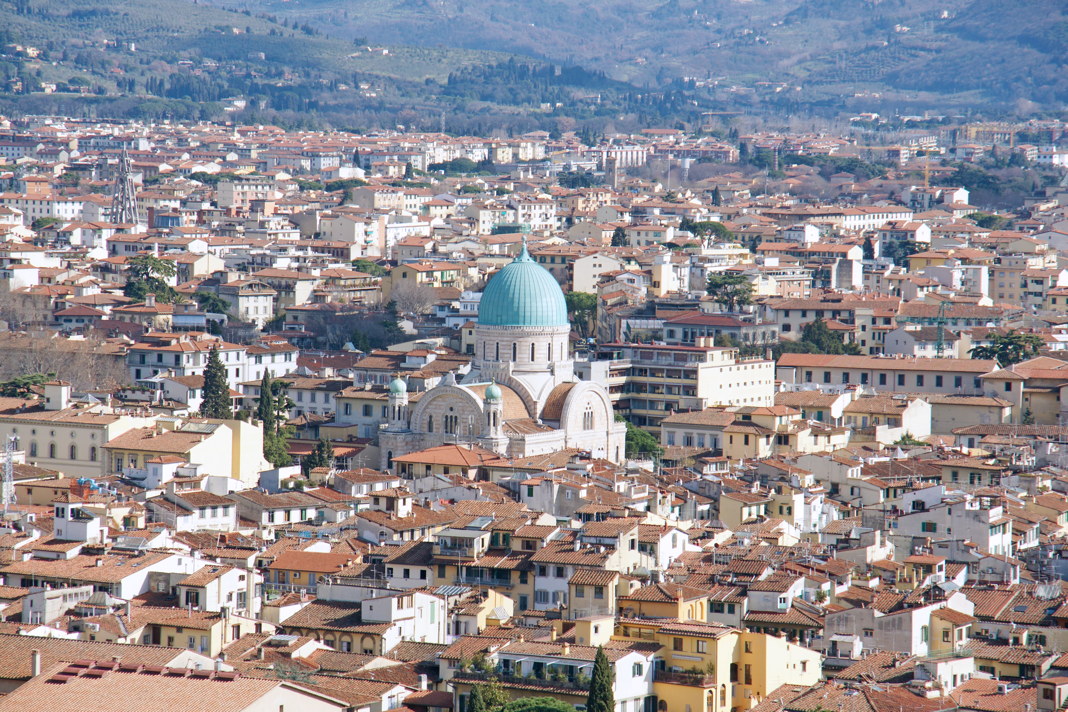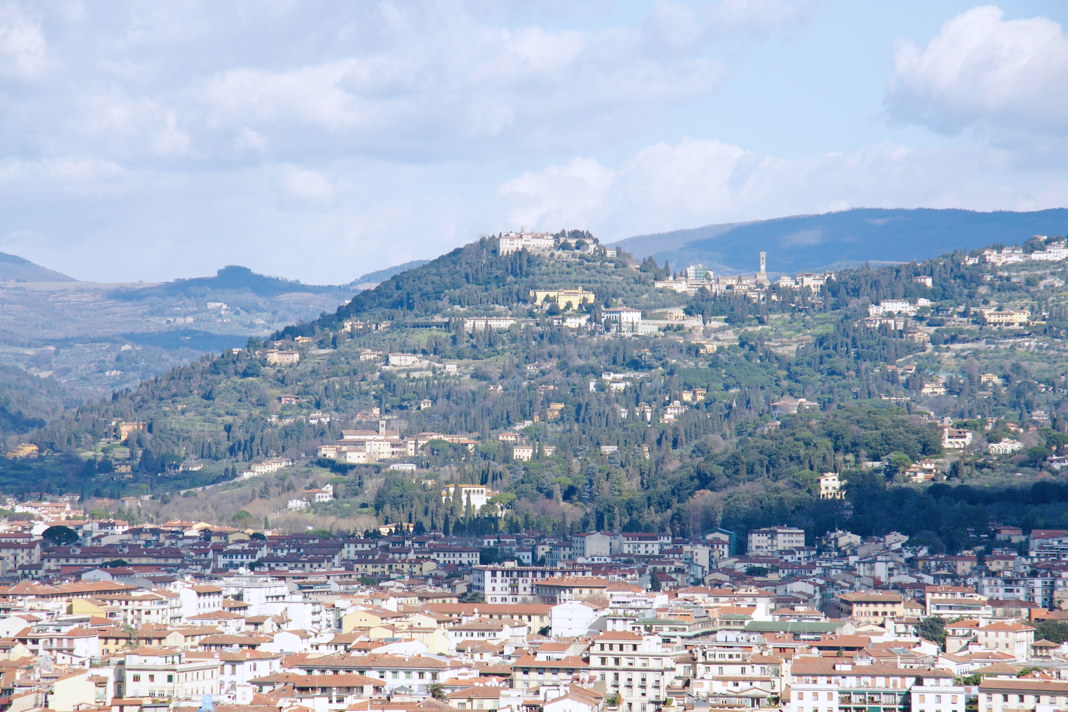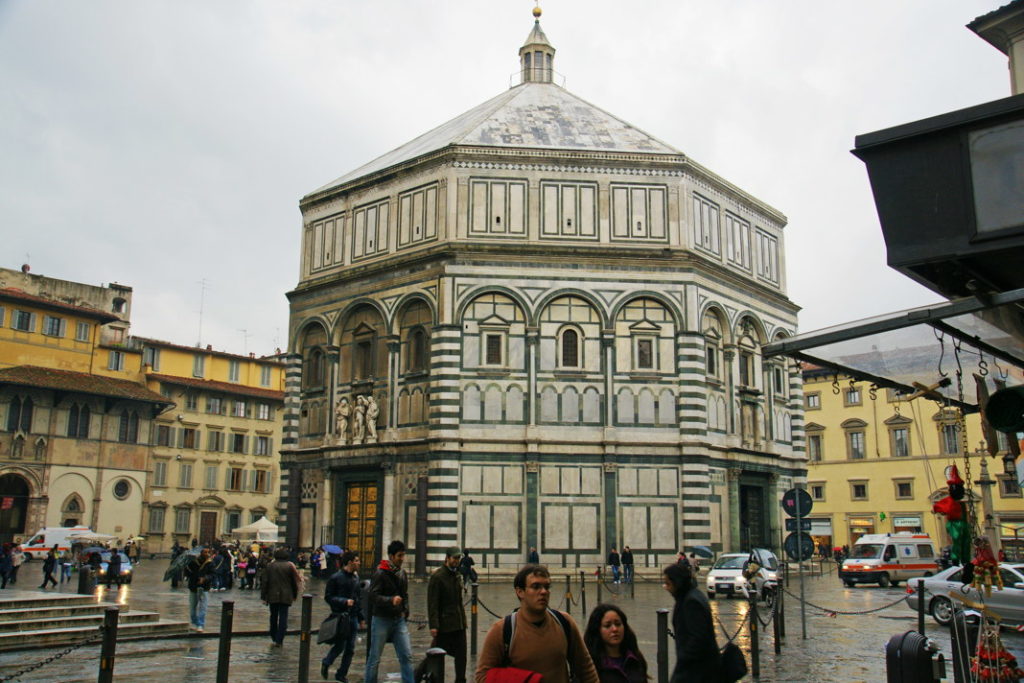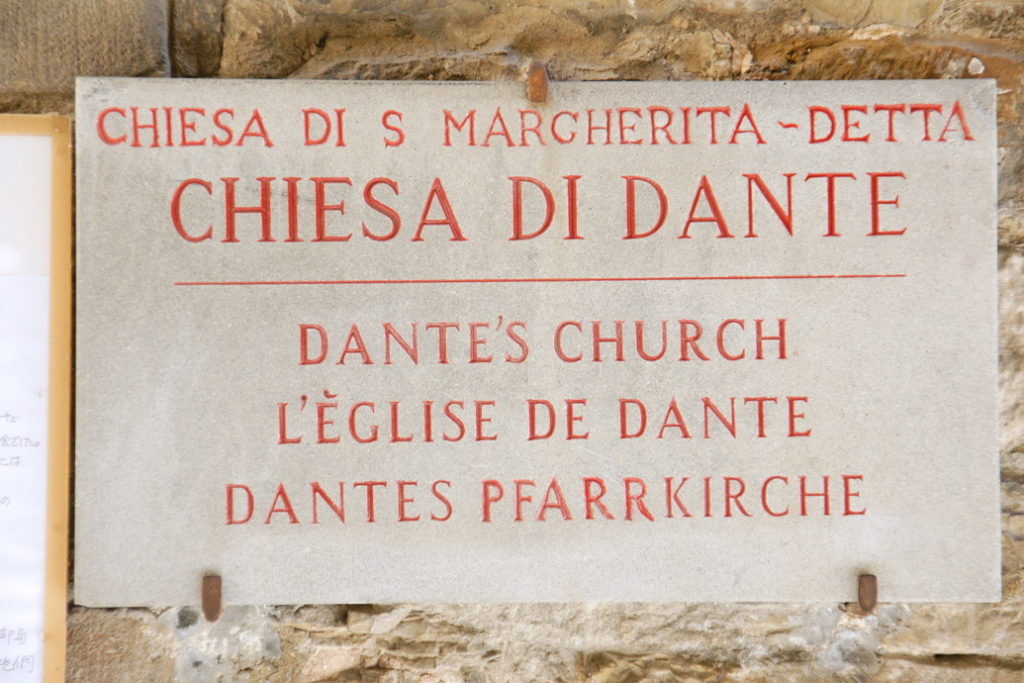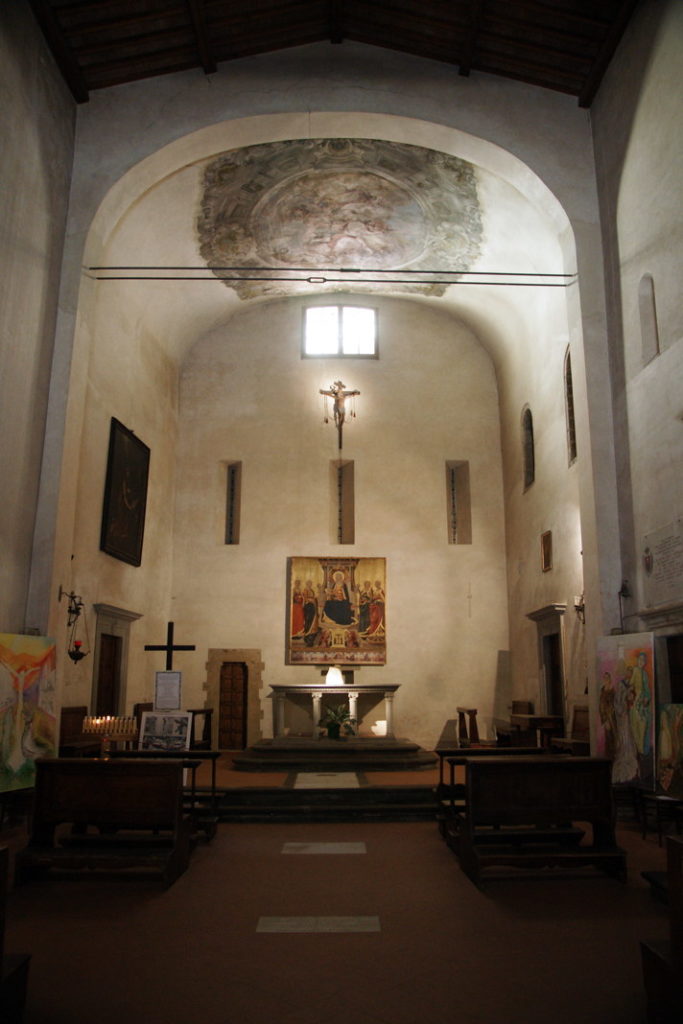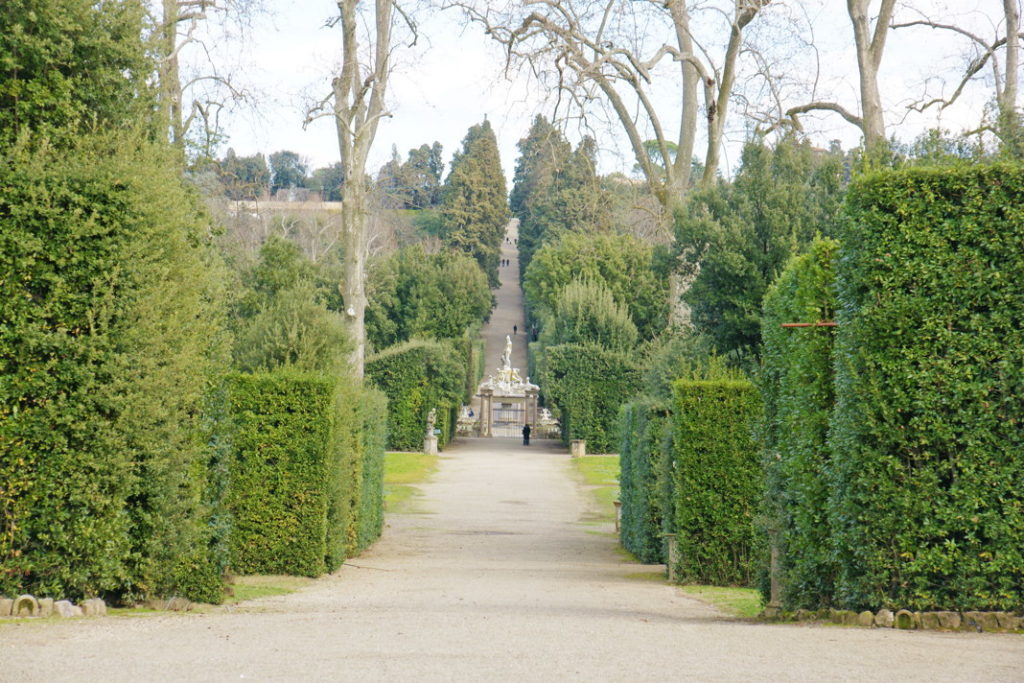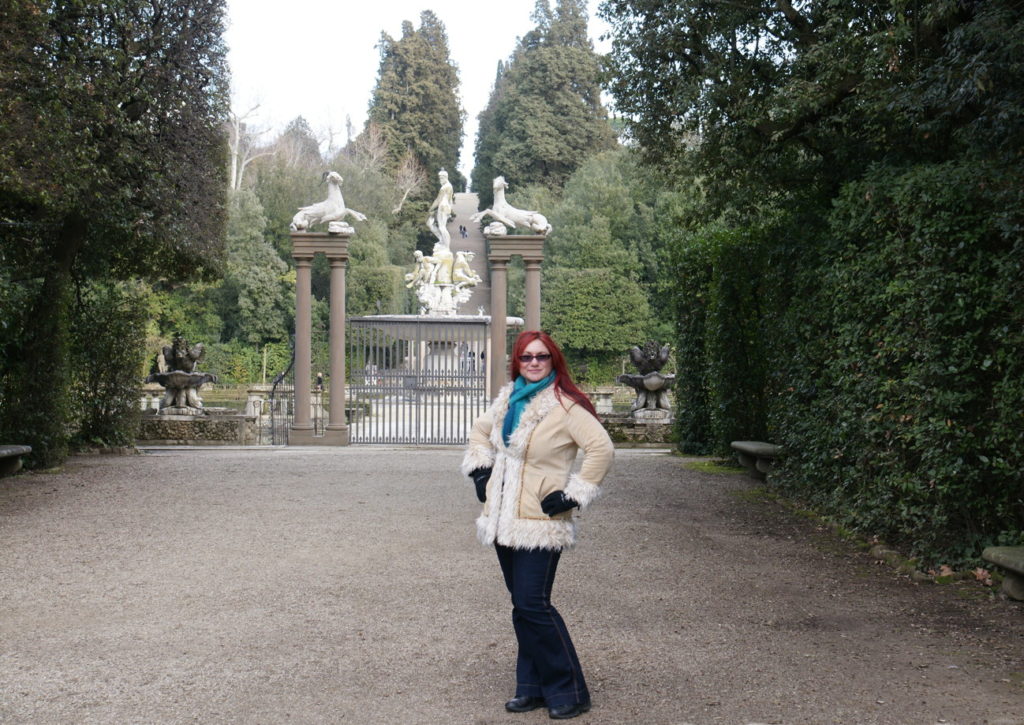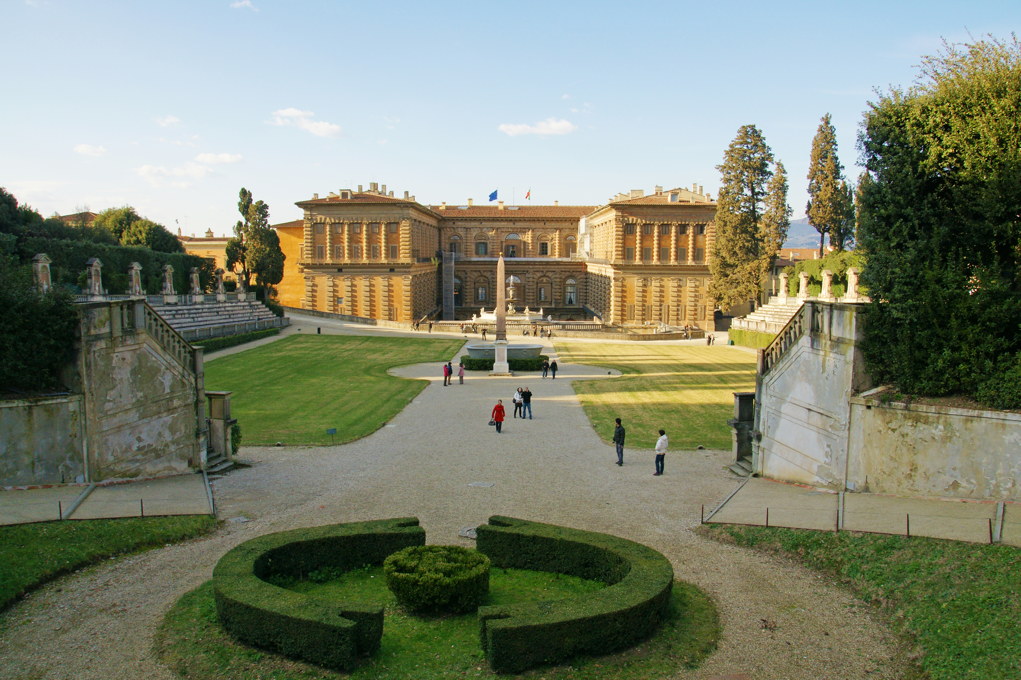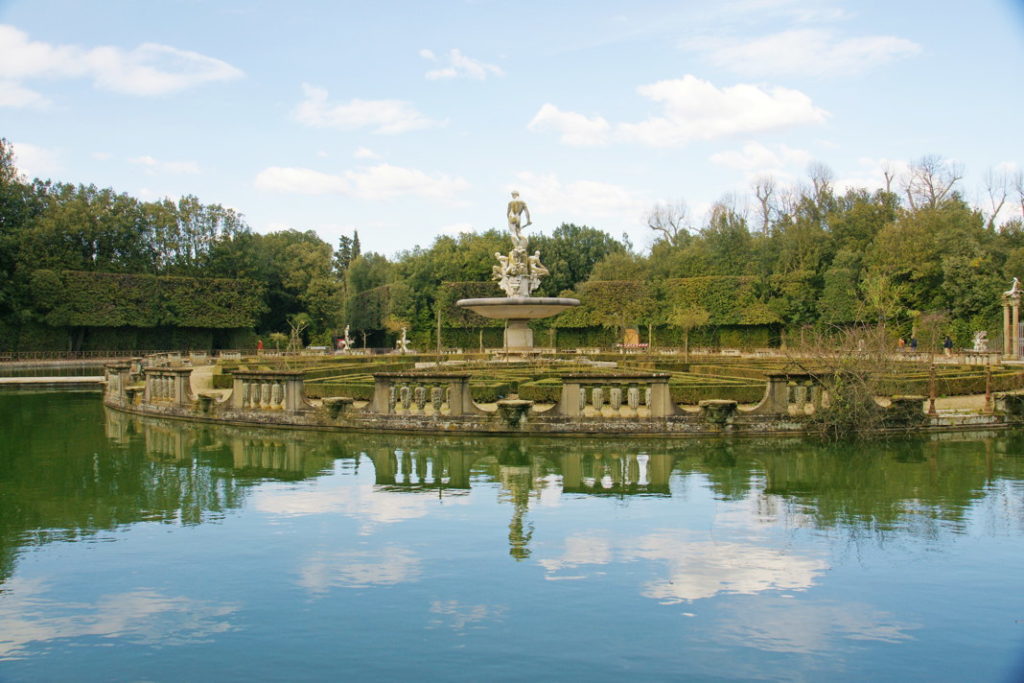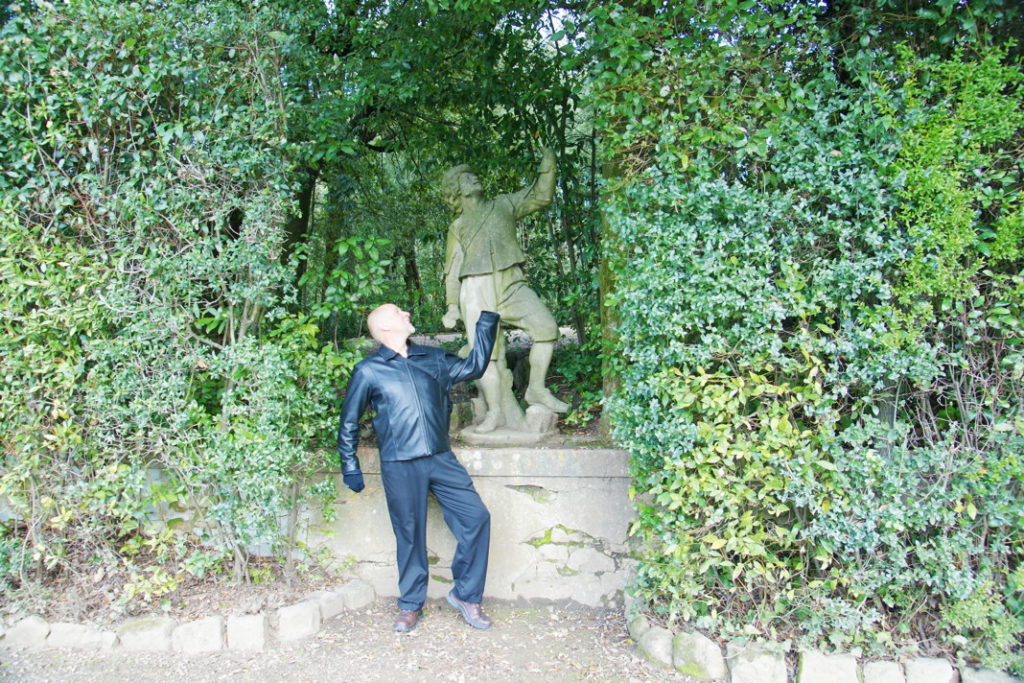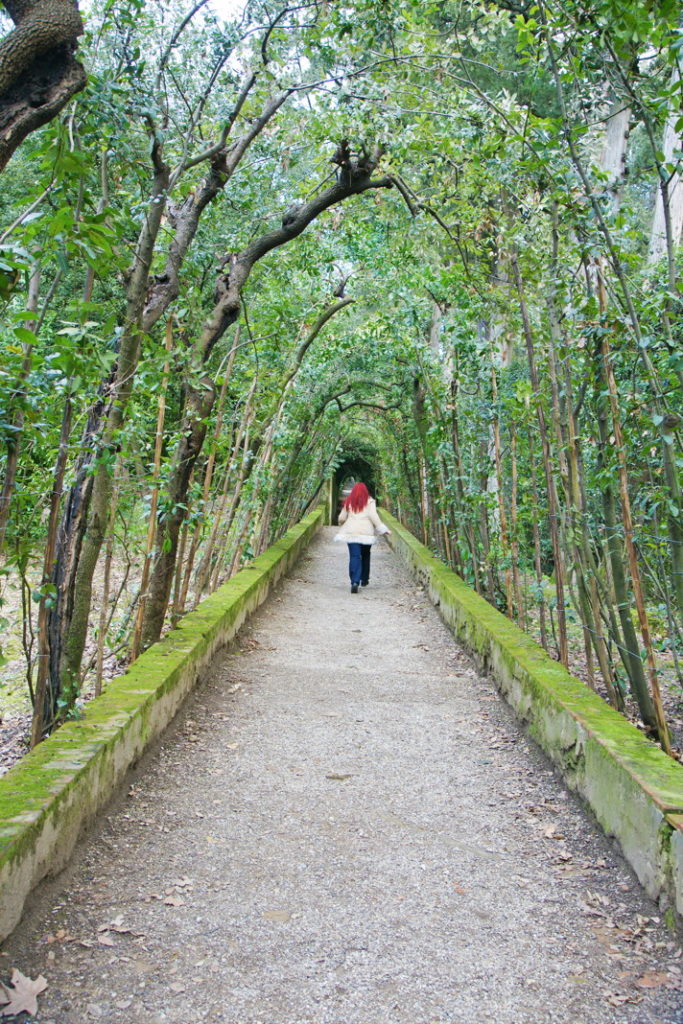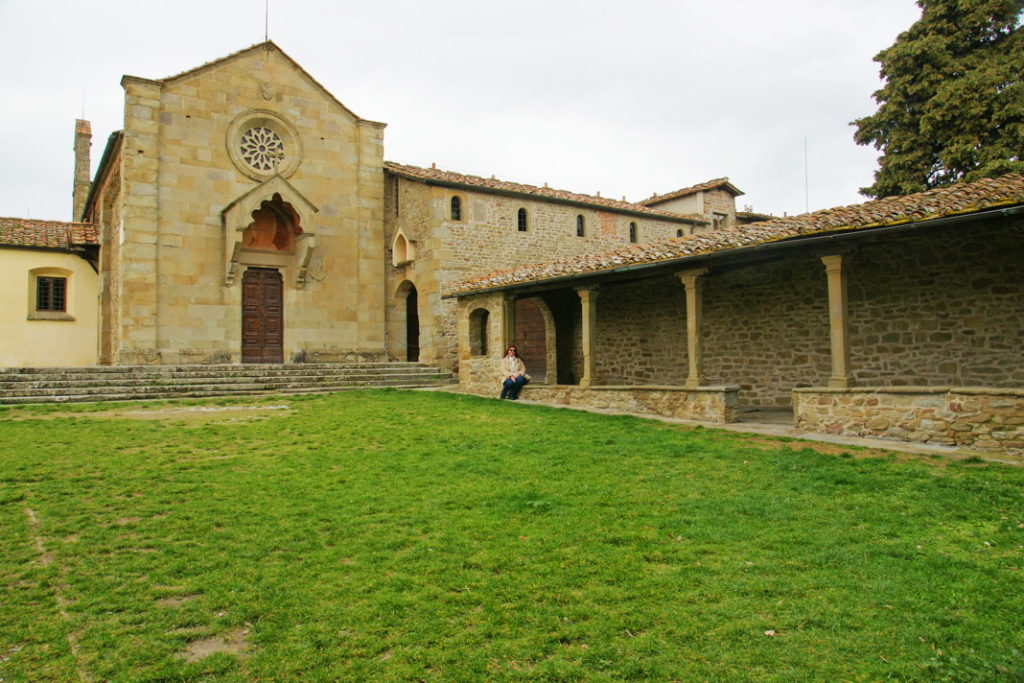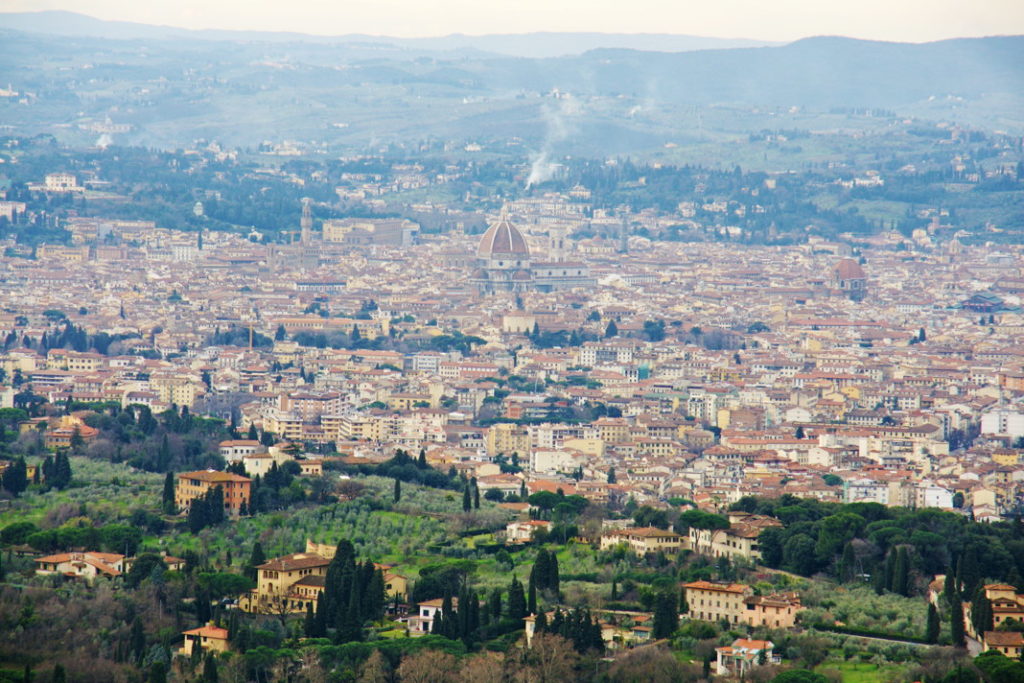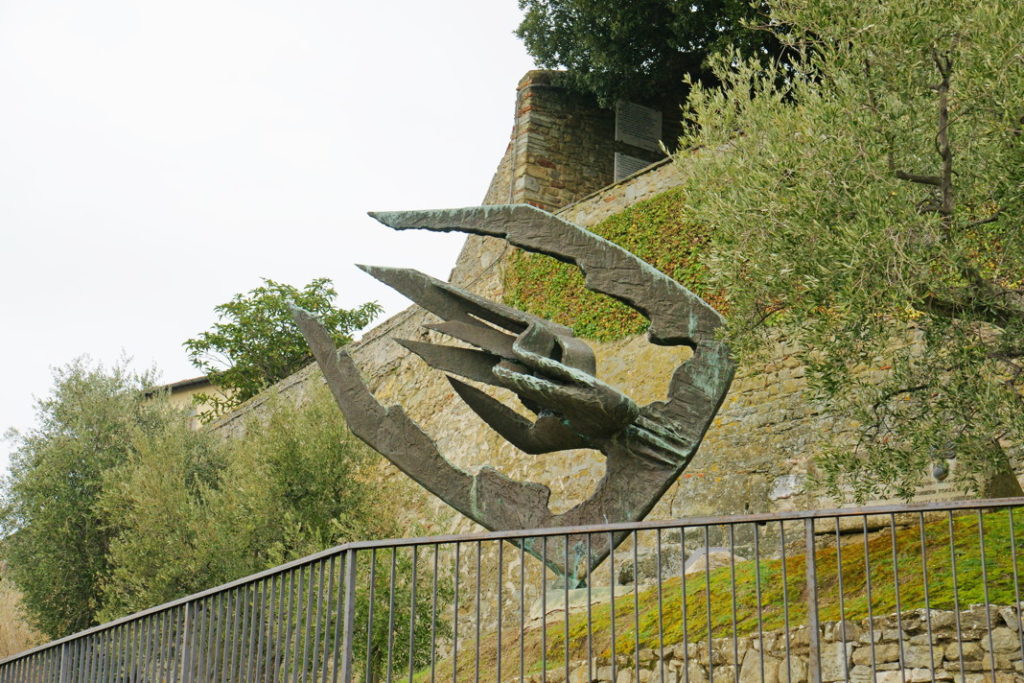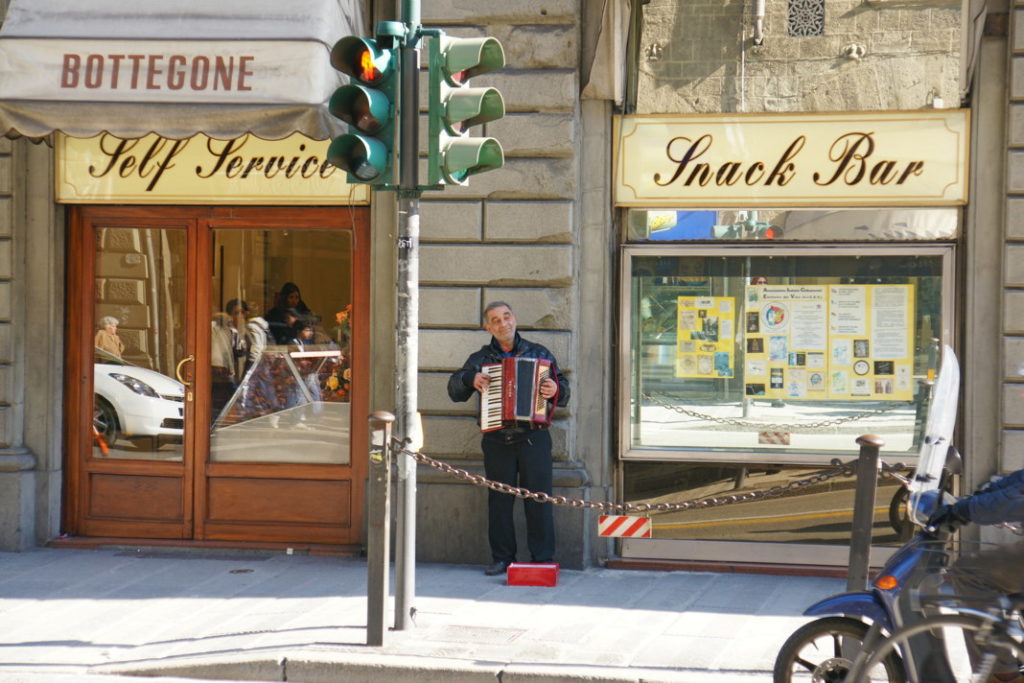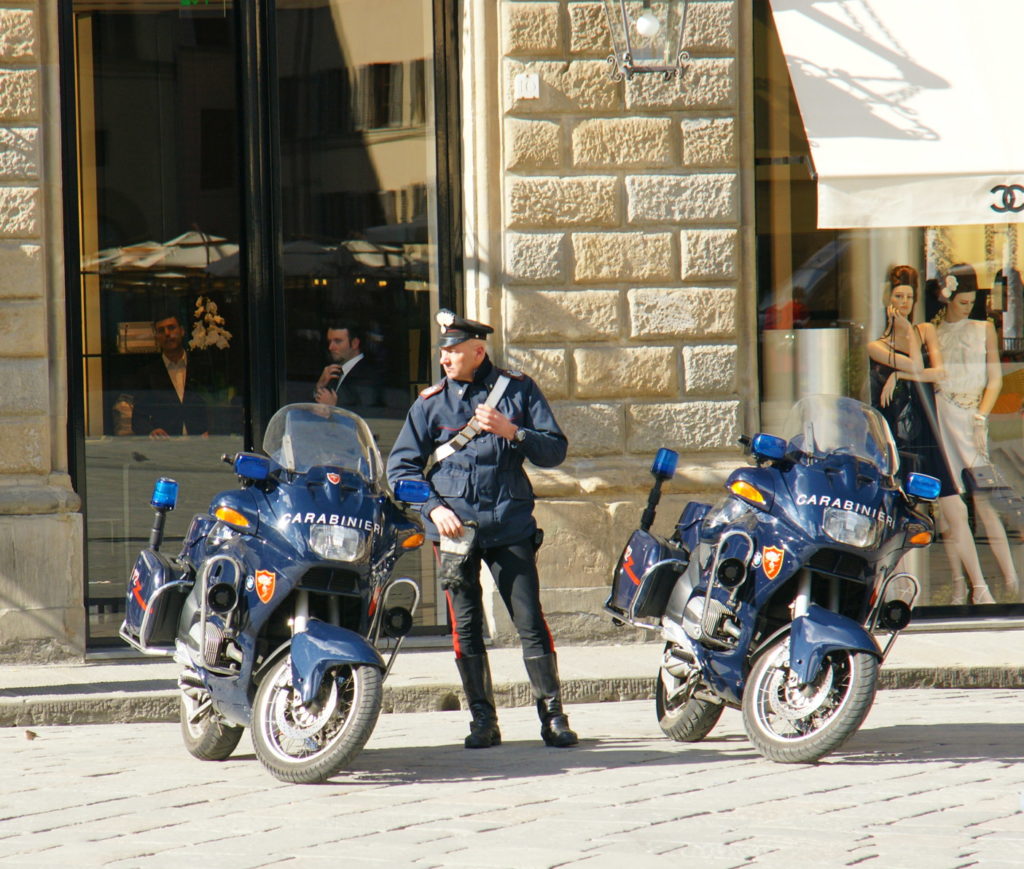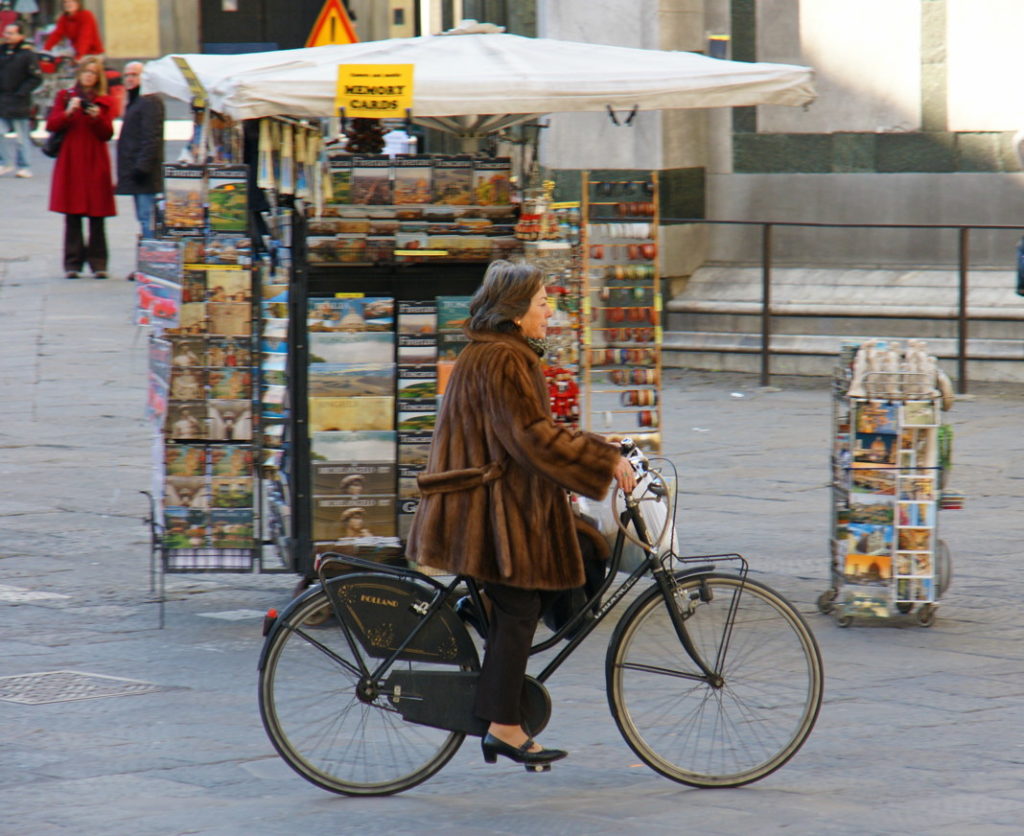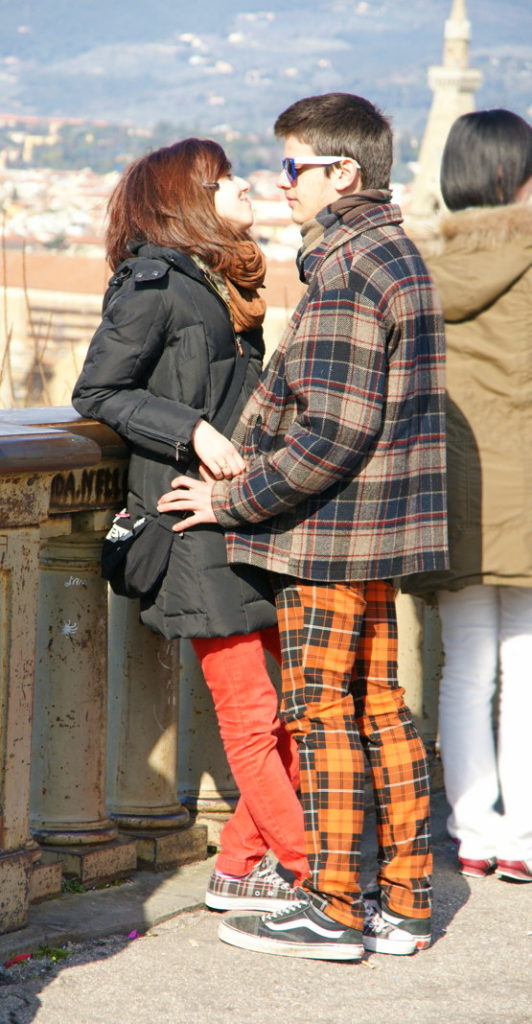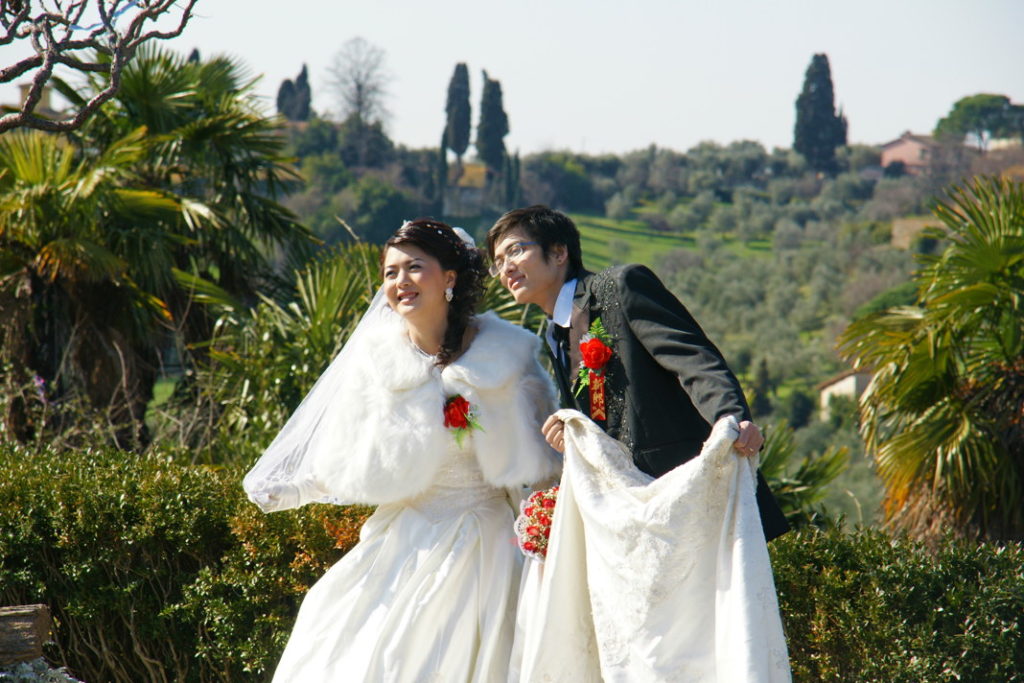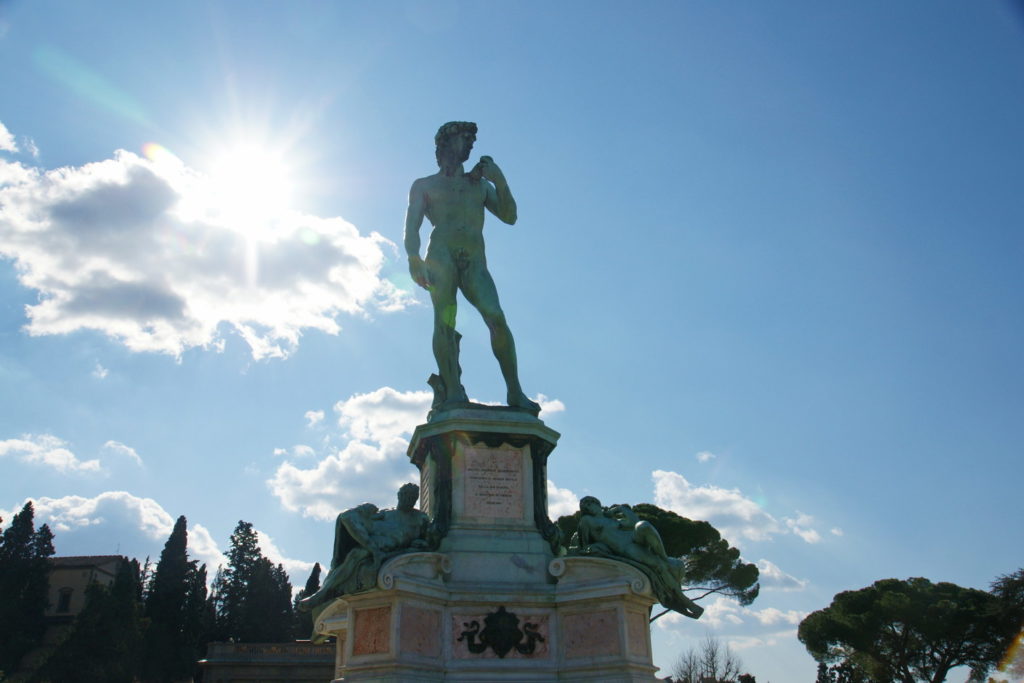A few years ago, we went to Florence, Italy to attend a conference in February. This, my friends, chronicles that adventure.
We know that Florence is famous for the statue of David, but little beyond that. So, let the adventure begin.
We are staying in Florence at Poggio Imperiale Apartments, a very cozy apartment run by the brother and sister team of Clara and Carlo Pieroni. To be honest, we have been a little nervous about our booking, as it is the first time we found rental accommodations through Craigslist.com! Fingers crossed that the apartment does exist! We nervously arrive to the address — and are instantly relieved the moment we are greeted by Clara and Carlo, who are both very friendly and extremely accommodating helping us get settled in.
We enjoy eating in restaurants, but it’s also very convenient to be able to cook and eat when and what we want. Having a kitchen also allows us the opportunity to live like locals; going to the local market to shop for fresh groceries is an experience in itself. And there’s nothing quite like cooking Italian food in Italy.
We’re tired from our travels and go to bed early. However, we end up finding ourselves awake at 3:00am. Instead of fighting the jet lag, we decide to take a walk and explore the city at dawn.
Another one of the nice aspects of our apartment is the location: right next to the Piazzale di Porta Romana, one short block away from the Giardino di Boboli, and less than a mile from Ponte Vecchio on the Arno river. So, let’s go!
Florence by Night
It is two hours before sunrise. We walk down quiet streets towards Ponte Vecchio, noting the numerous motorcycles. Narrow, winding streets crowded with vehicles and pedestrians no doubt give an advantage to the cyclists.
The shops near Ponte Vecchio look leathery in the yellow light of the street lamps. Even here, the iconic overhanging rooms are in abundance.
We are on the bridge now, and have it all to ourselves. It’s beautiful in this rare moment of solitude.
The arched hallway seems to stretch forever in the yellow light — okay, we have to do something fun, right?
Nothing is plain, even the filigree of the vaulted ceiling.
All around us is the impressive Florentine architecture, and the street lamps sparkle in an Italian fairyland.
The sky turns to rose as the day is soon upon us. The water in the Arno River changes colors as the sun rises – at one point becoming iridescent. It is a sight to behold!
Once the sun is up, we return to our apartment for breakfast.
Florence by Day
According to sources, “Ponte Vecchio, or Old Bridge, was the only bridge across the Arno in Florence until 1218. The current bridge was rebuilt after a flood in 1345. During World War II it was the only bridge across the Arno that the fleeing Germans did not destroy. Instead they blocked access by demolishing the medieval buildings on each side. On November 4, 1966, the bridge miraculously withstood the tremendous weight of water and silt when the Arno once again burst its banks.”
The Corridoio Vasariano was built in 1565, and it includes this beautiful colonnade.
The Cattedrale di Santa Maria del Fiore is the main church of Florence. Construction began on this Gothic style cathedral in 1296 and was structurally completed in 1436. The exterior of the basilica is faced with polychrome marble panels in various shades of green and pink bordered by white and has an elaborate 19th-century Gothic Revival façade. Viewing this building inspires wonder; it’s from a time long ago, when material was expensive but craftsmen were abundant.
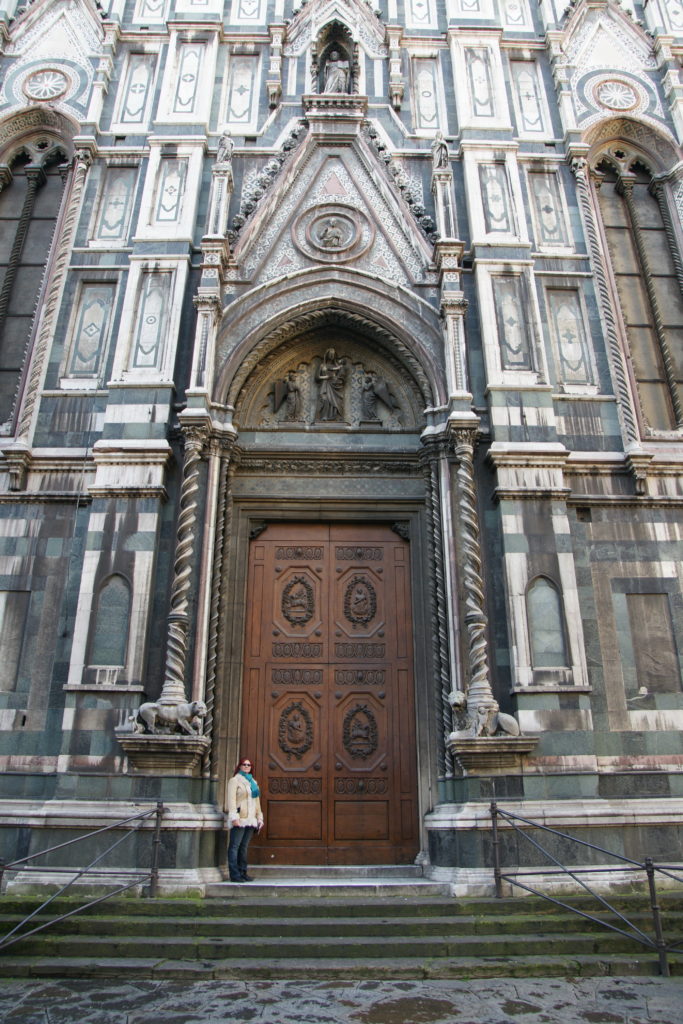
The door of the cathedral. Rather than being built to accommodate giants, we suspect it was built to impress people with the majesty of the structure.
The attention to detail is striking. We can only imagine the hundreds or thousands of skilled professionals who gathered in this one place to build such a structure.
We are in awe that such a marvelous construction could have been built in the early Renaissance.
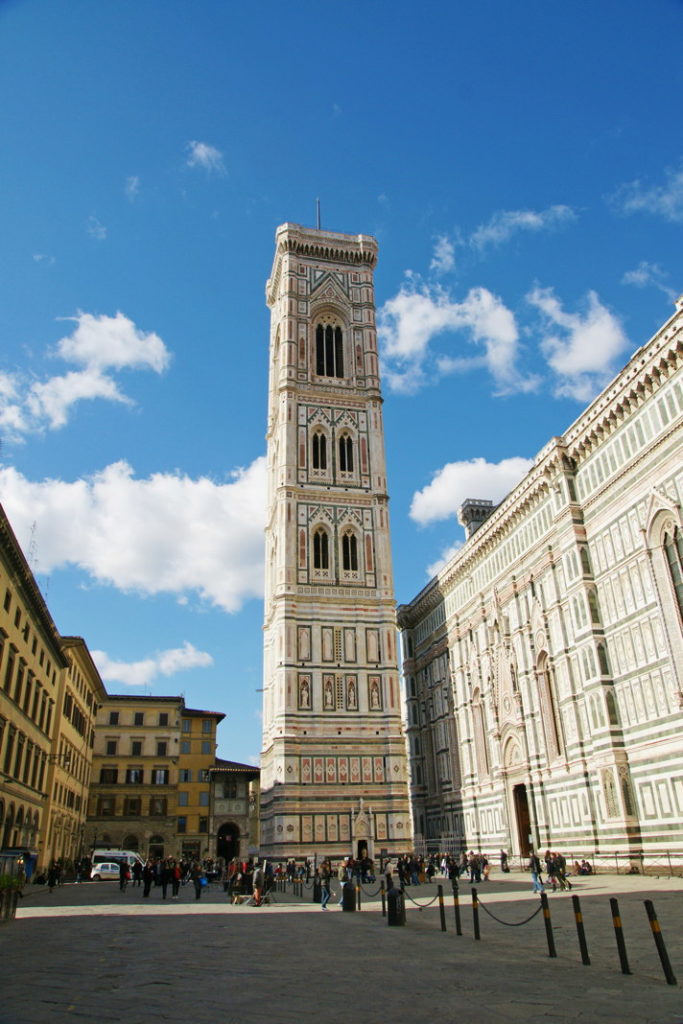
Campanile di Giotto, a free-standing bell tower that is part of the complex of buildings that make up Florence Cathedral on the Piazza del Duomo in Florence, Italy.
In the same complex of building is Campanile di Giotto, a 278-foot towers that offers panoramic views of Florence. We decide to climb it.
We think we are in shape until we climb about 200 of the 414 steps. We take a break, then pace ourselves better, resting after a couple flights on our way to the top.
And, of course, the view is just what you’d expect of a place like Florence.
In the same complex of buildings is the Battistero di San Giovanni, constructed between 1059 and 1128 in the Florentine Romanesque style. The Baptistry is renowned for its three sets of artistically important bronze doors with relief sculptures. The Italian poet Dante and many other notable Renaissance figures, including members of the Medici family, were baptized in this baptistry. I suspect the builders did not imagine the Baptistry would one day be part of a busy intersection.
We search for, and finally find, Dante’s Church, which is more of a chapel than a church.
It is first recorded in 1032 and is said, contentiously, that this church was the location of Dante‘s marriage to Donati family’s parish church and also contains several tombs of the Portinari family, to which Dante’s great love Beatrice Portinari belonged, including Monna Tessa, her nursemaid. Although not as grandiose as the buildings we just saw, this tiny church has an air of serenity, a place more for contemplation than awe.
A bit farther from the Piazza del Duomo is the Basilica di Santa Croce, the principal Franciscan church in Florence, Italy, and a minor basilica of the Roman Catholic Church. It is the burial place of some of the most illustrious Italians, such as Michelangelo, Galileo, Machiavelli, the poet Foscolo, the philosopher Gentile and the composer Rossini, thus it is known also as the Temple of the Italian Glories (Tempio dell’Itale Glorie).
We’ve seen a lot, it’s getting late, and we decide to walk back to our apartment and relax.
Giardino di Boboli
The next morning, we visit the Giardino di Boboli, a park that is just across the road from our apartment.
It is a beautiful morning, the February air is crisp, and we walk down the manicured path to the entrance.
We are in Florence so, of course, statuary adorns the gate’s columns.
The Boboli obelisk, although relatively unassuming, has an interesting past. The granite from which the obelisk is carved comes from Aswan and the inscriptions are dedicated to Atum, the deity of the city of Heliopolis. It is suspected to have been first erected in that city during the reign of Ramesses II. In the first century AD, it was moved to Rome by Domitian and placed in the Temple of Isis in the Campus Martius.
In the sixteenth century, Cardinal Ferdinand I de’ Medici bought the 6-metre high obelisk in Rome and placed it in the gardens of the Villa Medici. When the Grand Duke Peter Leopold of Lorraine became Grand-Duke of Tuscany, he transferred to Florence many of the artworks in the Villa Medici. In 1788 he moved the obelisk, which weighed 9000 kilograms, traveling to first to Livorno, then by land to Florence. The voyage took four months. He also moved the Ancient Roman basin made of granite that had been associated with the obelisk in the Villa Medici.
It was erected near the center of the Amphitheater of the Boboli Gardens in 1790, along the main axis leading away from the palace. In 1840, the granite basin, originally thought to derive from the Terme Alessandrine found in the Campo Martius of Rome, was also included in front of the obelisk. The obelisk is surmounted by a gilded orb and the base has four turtles.
I would tell you it’s beautiful, but then, everything here is. 🙂
This Isolotto, or little island, features stone and marble statues depicting mythological, historical, bucolic, and picaresque subjects.
This is but one of the dozens of statues in the gardens.
Is this the exit? I hope so.
Fiesole
We decide to leave Florence, and go to Fiesole to see the San Francesco Monastery. It’s about six miles away, so we hire a taxi to drive us there.
The monastery was built in 1399. Although not as splendid as the religious structures found in Florence, it is amazing that these buildings constructed of stacks of stones have endured for so long and still inspire us; these simple structures are a testament to the energy and desires of mankind, even those living over 600 years ago.
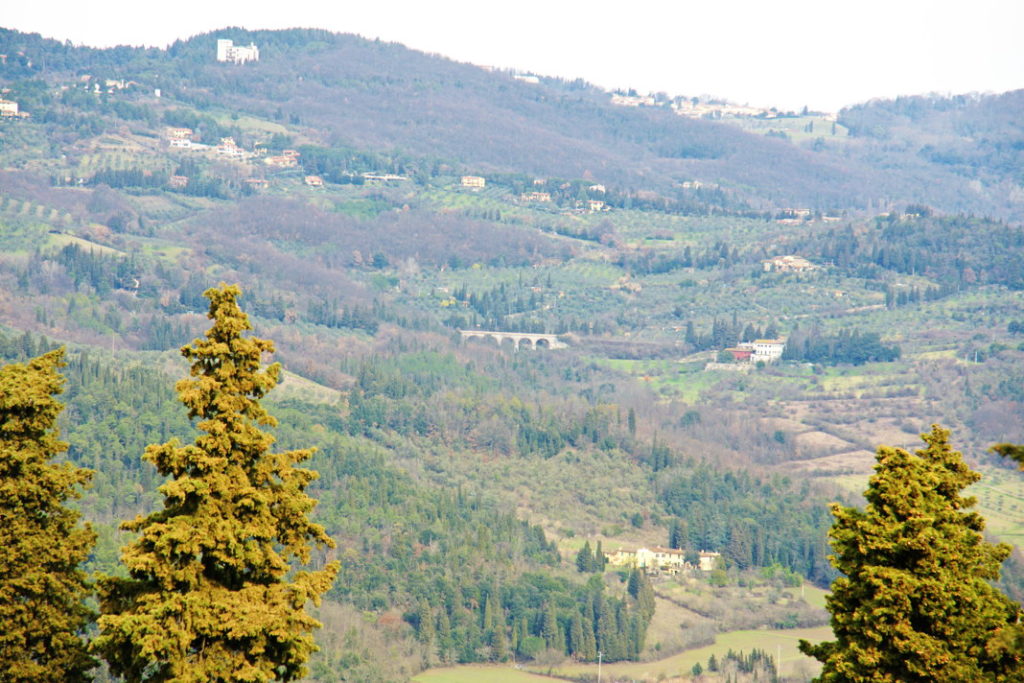
The view from Convento di San Francesco in Fiesole. Note the bridge in the center of the photograph.
We walk around the small town. However, the distant scenery draws our attention. The arch bridge in the distance is something we don’t have in California.
The view towards Florence is amazing, seemingly archetypal of Italian cities. The air is a bit hazy today, but that does not distract of the beauty.
Just outside Fiesole is a pronged statue, vaguely reminiscent of a Formic fighter. (Geek alert!)
It’s time to return to Florence, and we search for a taxi, but to no avail. So we start to walk back, figuring it’s all downhill and we’ll find a taxi eventually. Nope. Still, it’s a beautiful day, the air is crisp, we are in Italy, and we enjoy the long walk.
Fashion and Style of Florence
We should not neglect the fashion of Florence. Florence is regarded by some as the birthplace and earliest centre of the modern (post World War Two) fashion industry in Italy. Let’s take a look.
As the men and women of Florence go about their day, this gentleman serenades them with his accordion.
A member of the Carabinieri looks cool just being himself.
Even old ladies riding their bicycles to the shops look nice in Florence. This was a common sight. Seriously, Italians take fashion seriously!
Some folks have a less-than-classic taste in clothing, which adds to the fun of Florence.
Married on Florence, a romantic beginning to a happy life.
Michelangelo’s David
But Florence is probably most famous for David, a marble sculpture by Michelangelo.
Michelangelo’s David is a 17-foot statue representing the Biblical hero of the same name. There are two statues of David in Florence. One inside The Academia Gallery and this one. Both are worthy of a visit.
The cultural immersion experienced in the few weeks we are able to live in and explore Florence has left us breathless. Staying in an apartment definitely gave us a glimpse into the lives of locals – we did not feel quite like tourists. The food, the art, the architecture, the language, the fashion – all things Italian – are both exquisitely beautiful and yet comfortable and non-pretentious. The beauty of Italy has stayed in our hearts ever since this magical trip to Florence.

